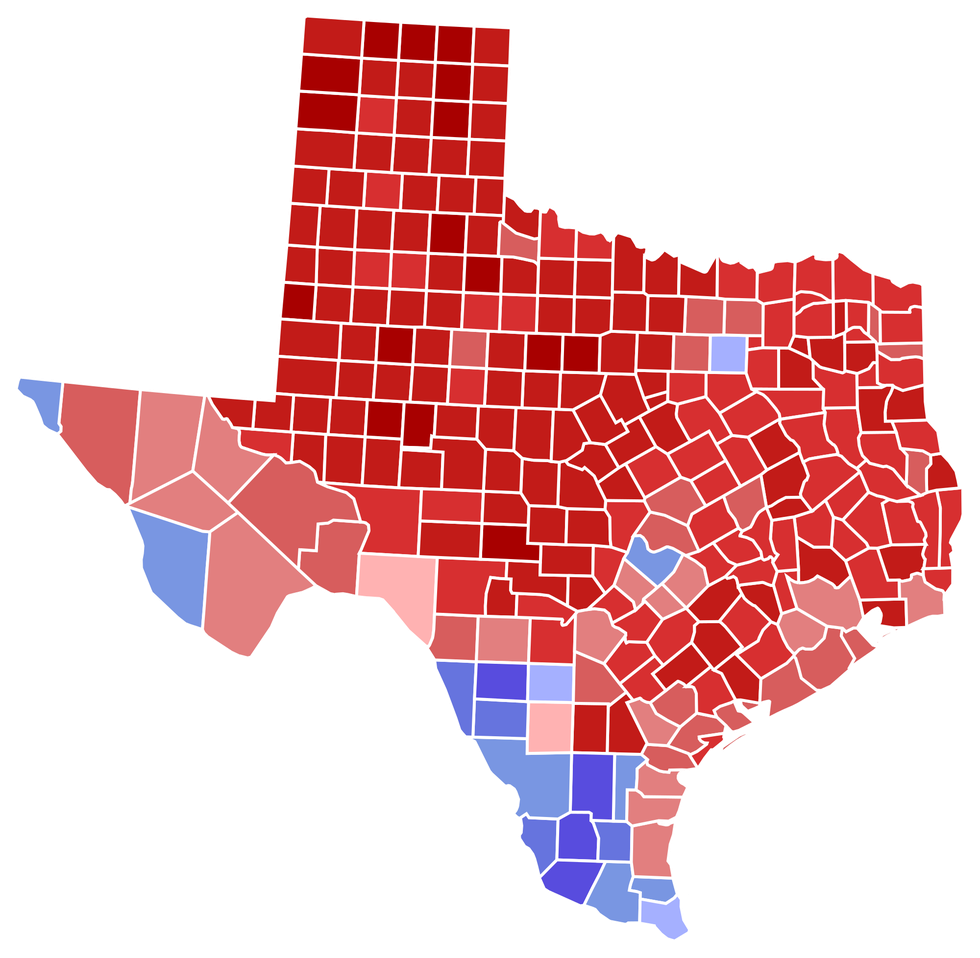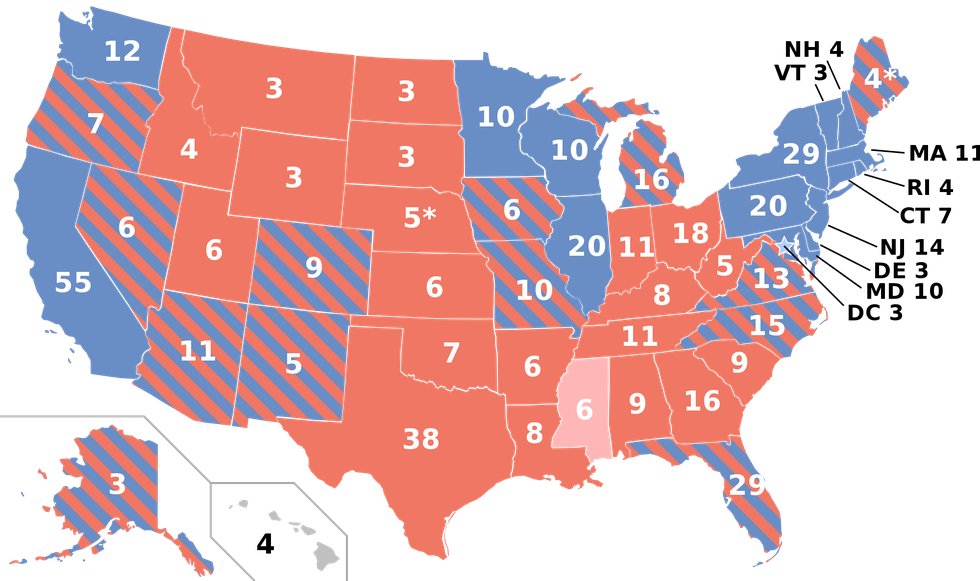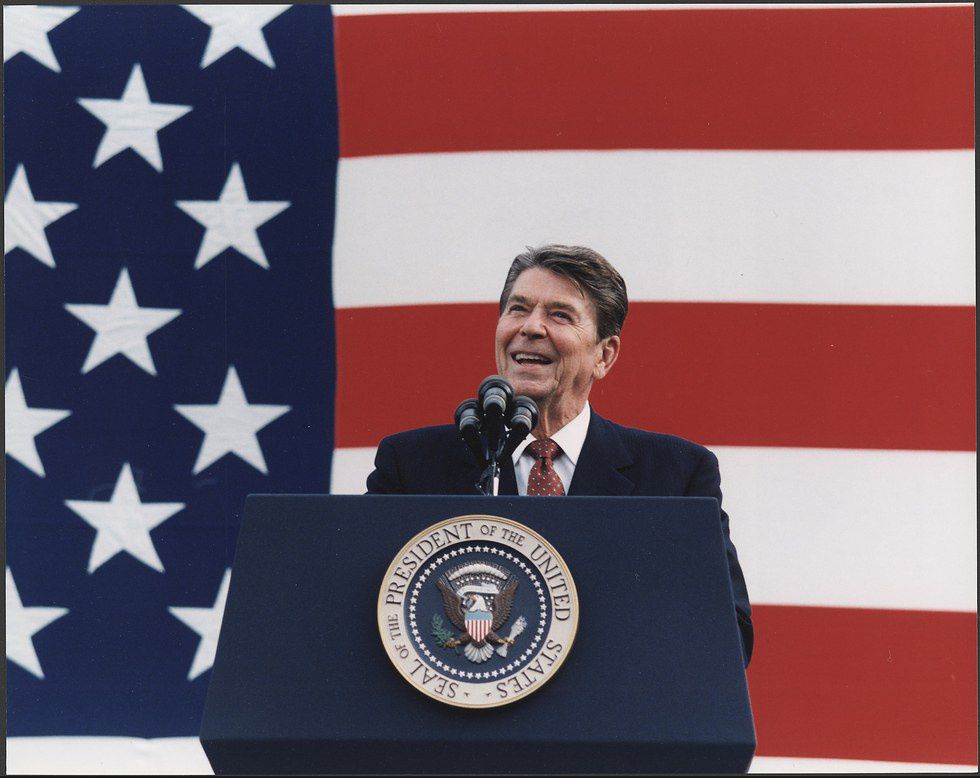There seems to be an overwhelming amount of conspiracy and uneducated guessing going on right now as to exactly what happens next following Election Day...
The following article will provide the exact timeline moving forward following this most heated of modern American Presidential Elections...
November 8th, 2016: Election Day in America
It is on election day that the popular vote begins to be measured and appropriated on an empty gray map of the United States of America. Early voting ended at 5 PM the evening before and the final votes in each state are now being cast and tallied leading up to the closing of the polls soon to follow. This is the popular vote that is being measured. The popular vote comes from all American citizens and is what depicts the majority for each state.
What does that mean?
Majority in a political sense, refers to the total number of votes that amounts to greater than half. For example, lets take a look at the state of Texas:
Donald Trump - Republican Party - Votes: 53%
Hillary Clinton - Democratic Party - Votes: 43%
Gary Johnson - Libertarian Party - Votes: 3%
Jill Stein - Green Party - Votes: 0.9%
As you can see above, Donald Trump won the majority in Texas last night by securing the largest percent of the popular vote with 53%. Due to Trump securing the majority in Texas for the Republican Party; Texas was then colored solid red and the prospective electoral votes are then cast in favor of Donald Trump.
December 19th, 2016: Electoral Votes Cast
This is where it gets extremely interesting...
What is the Electoral College? The Electoral College is a group of members that each represent their respective states and are the electorates that formally decide who the next U.S. President will be. Each state receives electorates equal to their respective number of U.S. House of Representatives members, plus their two U.S. senators.
(For Texas: 36 House Reps and 2 Senators= 38 Texas Electoral Votes.)
The total number of electors available in the US is 583, the candidate that receives 270 electorates or more, will win the overall majority and the election itself. Below is a map of the United States and the amount of electors that each state owns in the Presidential Election.
Red: Almost Always Republican Majority
Blue: Almost Always Democratic Majority
Red/ Blue: (Swing States) Can Go Either Way
On December 19th, the electorates from each state will meet at their individual State Capitols and formally cast their votes for the next President of the United States. Here's the kicker... The Constitution does not require the electorates to vote according to the popular vote of the state they represent. However, it is very rare that an electorate ignore their state's majority vote. The electoral college is a crucial part of the U.S. Presidential Election because it is in fact the Electoral College that will make the final decision.
U.S. Presidential Election 2000:
George W. Bush: Popular: 47.9% Electoral: 271
Al Gore: Popular: 48.4% Electoral: 266
January 6th, 2017: Electoral Decision
The electoral votes cast on December 19th are counted before a joint session of Congress and the presiding President of the Senate in turn will declare the final electoral voting result in the 2016 U.S. Presidential Election.
January 20th, 2017: Inauguration Day
In front of the U.S. Capitol building in Washington D.C. the formal process of swearing in the newly elected U.S. President and Vice-President takes place. The Vice-President-elect is sworn in first, and shortly after the President-elect follows.
The oath recited (Article II, Section 1, U.S. Constitution):
"I do solemnly swear (or affirm) that I will support and defend the Constitution of the United States against all enemies, foreign and domestic; that I will bear true faith and allegiance to the same; that I take this obligation freely, without any mental reservation or purpose of evasion; and that I will well and faithfully discharge the duties of the office on which I am about to enter: So help me God."
Thereafter:
It is then and only then, the United States Presidential Election is formally concluded and the new President of the United States takes his or her hard-earned seat right at the very top of the Executive Branch as Commander and Chief.
The Presidential Election of the United States is extremely tedious and in-turn births a great deal of controversy surrounded by factand an exuberant amount of fiction.
Hopefully this helps to clear up some of the craziness currently passed around over social media.

















































